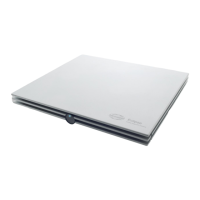Eclipse Additional Information Page 183
9 TEOAE
9.1 About the TEOAE25 module
The Eclipse TEOAE25 module is intended for use in the audiologic evaluation and documentation of ear dis-
orders using Transient Evoked Otoacoustic Emissions. The target population for Eclipse TEOAE25 module
includes all ages.
The Eclipse TEOAE25 module is designed to be used only by skilled personnel such as audiologists, ENT
surgeons, doctors, hearing healthcare professionals or personnel with a similar level of education. The de-
vice should not be used without the necessary knowledge and training to understand its use and how results
should be interpreted.
The Eclipse TEOAE25 module contains the following tests:
Clinical test
Pass-refer test
Availability of these tests or specific settings within these tests on the hardware or in the software depend on
the license purchased.
9.2 Brief Introduction to TEOAE
The Otoacoustic Emission was first described in 1978 by Kemp, D. T. Since then it has gained clinical ac-
ceptance as a test of the cochlea, in particular Outer Hair Cell function.
The emission is a sound generated within the cochlea either spontaneously or in response to acoustic stimu-
lation. In a normal ear sound is transmitted to the cochlea via the stapes footplate. The travelling wave
mechanism is responsible for excitation of hair cells along the basilar membrane within the cochlea.
The hair cells are located at frequency specific places on the basilar membrane. The excitation of the hair
cells will depend on the stimulus frequencies. The excitation of hair cells starts an active mechanical amplifi-
cation process within the cochlea. This active amplification from the outer hair cells also produces a by-prod-
uct, an inverse travelling wave, an emission from the cochlea. This emission / “echo” from the inner ear can
be recorded. Due to the active amplification mechanism within the cochlea the multi-frequency emission is
generated. The emission can then be analysed into its spectral components (Kemp, 1978).
TEOAEs are elicited by a wide band click stimuli. TEOAE requires one speaker and one microphone. These
are incorporated in the OAE probe used by the TEOAE25.

